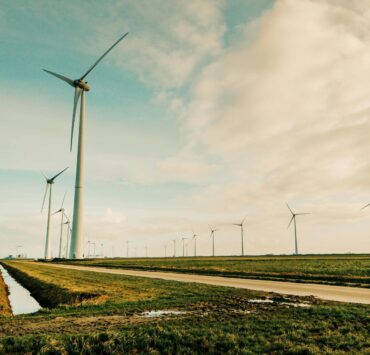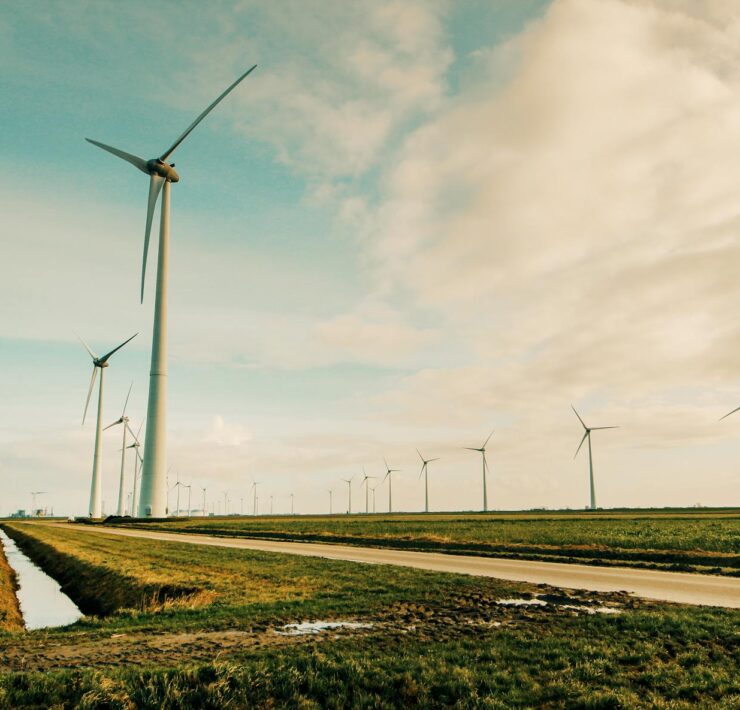Embracing Renewables: The Cradle to Cradle Approach in Power Production & Operation

I offer sustainable design and construction services as a construction…
Introduction
As the global community grapples with the escalating challenges of climate change and resource depletion, a paradigm shift in our approach to sustainability is essential. One such transformative concept gaining momentum is the Cradle to Cradle (C2C) approach, which stands as a beacon of hope for a regenerative and sustainable future. Central to this philosophy is the recognition of the utmost importance of transitioning to renewable energy sources to power production processes. By embracing renewables, we can unlock a harmonious coexistence between human activities and the natural world, while ensuring a perpetual cycle of positive impact.
Understanding the Cradle to Cradle Approach
Developed by architect William McDonough and chemist Michael Braungart, the Cradle to Cradle approach reimagines the entire lifecycle of products and systems. It emphasizes the creation of goods that do not end up as waste but rather become nutrients for new cycles of production or natural systems. Unlike the traditional linear “cradle to grave” model, where products end up in landfills after use, the C2C approach seeks to establish a closed-loop circular economy that regenerates and replenishes natural resources.
Transitioning to Renewable Energy Sources
Central to the C2C philosophy is the transition from fossil fuels to renewable energy sources in powering production processes. This transition is driven by several key reasons:
1. Mitigating Climate Change: Renewable energy sources, such as solar, wind, hydropower, and geothermal, produce little to no greenhouse gas emissions. By reducing our reliance on fossil fuels, we can significantly curb the emission of carbon dioxide and other harmful pollutants, which are major contributors to climate change.
2. Preserving Finite Resources: Fossil fuels are non-renewable resources that have taken millions of years to form. Once depleted, they are gone forever. Embracing renewable energy sources ensures we are not consuming finite resources at an unsustainable rate, but rather harnessing the power of the sun, wind, and water, which are perpetually available.
3. Reducing Environmental Degradation: The extraction, transportation, and combustion of fossil fuels often lead to environmental degradation, including deforestation, air and water pollution, and habitat destruction. In contrast, renewable energy technologies have a significantly lower environmental impact, helping to safeguard fragile ecosystems.
4. Promoting Energy Independence: Relying on renewable energy sources fosters energy independence for nations, reducing their dependence on imported fossil fuels and creating a more resilient energy infrastructure.
5. Fostering Innovation: Embracing renewables encourages innovation and technological advancements in the clean energy sector. This, in turn, drives economic growth, job creation, and sustainable development.
C2C Approach in Practice
Several industries have already embraced the C2C approach by integrating renewable energy sources into their production processes from renewable-powered manufacturing, sustainable agriculture, eco-friendly infrastructure to circular supply chains that prioritize renewable energy sources throughout the production and transportation of goods.
How are construction projects embracing the C2C approach by integrating renewable energy sources
a) Integration of Renewable Energy Sources in Production Processes:
1. On-site Renewable Energy Generation: Construction projects are incorporating renewable energy technologies, such as solar panels and wind turbines, directly into the design and construction of buildings and infrastructure. These on-site renewable energy systems can power construction equipment, lighting, and other temporary facilities during the construction phase, reducing the need for traditional fossil fuel-powered generators.
2. Sustainable Materials Selection: The C2C approach emphasizes using materials that are either recyclable or biodegradable. Construction projects are increasingly sourcing materials from renewable resources, such as sustainably harvested wood, bamboo, or recycled steel, thereby reducing the demand for non-renewable resources like virgin timber or non-recycled metals.
3. Energy-Efficient Construction Practices: Integrating renewable energy in the production phase also involves adopting energy-efficient construction practices. This may include optimizing building designs for natural lighting, ventilation, and passive heating and cooling strategies, thereby reducing the overall energy consumption of the structure.
4. Closed-Loop Material Cycles: Construction projects embracing the C2C approach strive to establish closed-loop material cycles where construction waste and materials are recycled and repurposed for future projects, reducing the reliance on raw materials and minimizing waste generation.
b) Integration of Renewable Energy Sources in Operational Processes and Occupancy:
1. Solar PV Systems: Building-integrated solar photovoltaic (PV) systems are increasingly common in construction projects, providing a sustainable and renewable source of electricity for the building’s operational needs. Excess energy can also be fed back into the grid, contributing to a cleaner energy supply for the surrounding community.
2. Geothermal Heating and Cooling: Geothermal systems utilize the stable temperature of the ground to heat and cool buildings. These systems offer a reliable and renewable energy source for maintaining comfortable indoor conditions while significantly reducing the building’s carbon footprint.
3. Wind Energy: In locations with suitable wind resources, wind turbines can be integrated into the design of buildings or installed nearby to generate renewable electricity for the building’s operational needs.
4. Smart Grid Integration: Construction projects are exploring ways to integrate renewable energy sources into smart grid systems, enabling efficient management and distribution of clean energy within the building and its surrounding infrastructure.
5. Energy Storage Solutions: To enhance the reliability and resilience of renewable energy systems, construction projects are incorporating energy storage solutions, such as batteries, to store excess energy generated during peak production periods for use during low-production periods or emergencies.
6. Sustainable Building Management: In the occupancy phase, construction projects are implementing sustainable building management practices to optimize energy use. This may include automated energy management systems, smart lighting controls, and energy-efficient appliances to reduce energy consumption.
Conclusion
The Cradle to Cradle approach represents a visionary step towards a more sustainable and harmonious future. By recognizing the importance of transitioning to renewable energy sources to power production processes, we can simultaneously address climate change, preserve finite resources, and reduce environmental degradation. Embracing renewables is not just a lofty goal; it is a crucial and achievable imperative in building a regenerative and circular economy where waste becomes a thing of the past and the prosperity of humanity is harmonized with the resilience of the natural world. As we embrace this transformation, we pave the way for a brighter and greener future for generations to come.
What's Your Reaction?
I offer sustainable design and construction services as a construction project manager and quantity surveyor. I focus on using sustainable materials for building. You can reach me at rnmbiu1@gmail.com

















